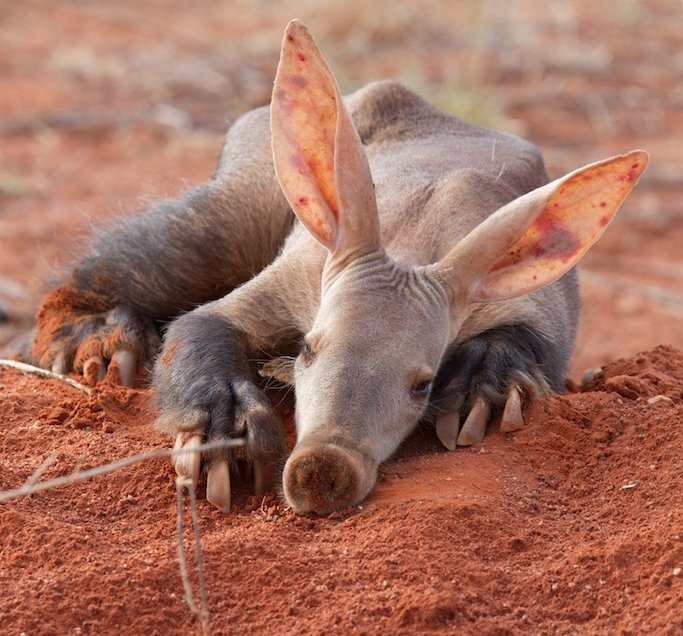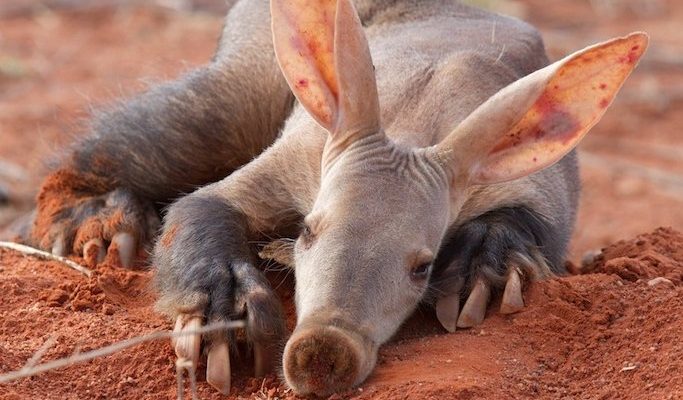
So, how do aardvarks manage to stay comfortable and safe in such harsh conditions? It’s a mix of clever behavioral traits and physical adaptations. Picture them as nature’s little survival experts, using their keen senses and adaptable bodies to find food and stay cool. Let’s dive into the ways these nocturnal creatures beat the odds and make the most of their tricky surroundings.
Physical Adaptations for Survival
Aardvarks are incredibly well-equipped for their lifestyle. First off, their long, powerful snouts are not just for show. They allow the aardvark to dig into the ground to find tasty termites and ants, which make up the bulk of their diet. Their sense of smell is top-notch, helping them locate food buried deep in the soil. Imagine having a built-in tool that can sniff out dinner from meters away!
Another fascinating feature is their sturdy feet. With strong claws, aardvarks can dig through tough earth and hard ground. They can create large burrows to escape the heat or potential predators during the day. Think of these burrows like cozy little homes underground, offering a cool refuge when the sun blazes down.
Their skin is also quite resilient. It’s thick and durable, which helps protect them from scratches as they maneuver through underbrush. Aardvarks even have a unique way of keeping cool; they sweat very little. Instead, they rely on their burrows to regulate their body temperature during the hot daytime hours. It’s like having a built-in air conditioner underground!
Nocturnal Lifestyle: A Smart Choice
Aardvarks are primarily nocturnal, which means they’re most active at night. This is a smart adaptation. By venturing out after sunset, they avoid the scorching daytime heat. Instead, they embrace the cooler night air. Picture going for a nighttime stroll when it’s more comfortable—this is what aardvarks do every night!
By foraging at night, aardvarks can search for food with less competition from other animals. Many predators are diurnal, meaning they’re active during the day. This gives the aardvark an advantage, allowing them to scavenge for insects in peace.
Their nocturnal nature also means they rely heavily on their other senses. While their vision isn’t the best, they have excellent hearing. This helps them detect sounds of other animals and locate their food sources more effectively. It’s like having your own radar system while exploring the nighttime world!
Digging Deep: Food Sources in Tough Terrain
Aardvarks feast primarily on ants and termites, which are abundant in their habitats. But finding these insects isn’t always easy, especially in dry or rocky environments. Here’s where their digging prowess comes into play. A single aardvark can dig up to a meter deep into the ground. Imagine digging for buried treasure; that’s essentially what aardvarks do every night!
They can also consume a vast number of insects in one sitting—up to 50,000 ants or termites in a single night! This incredible capacity ensures they gain enough nutrients to survive. To put this in perspective, it’s like eating several large pizzas in one go!
Interestingly, aardvarks also adapt their foraging strategies depending on availability. In times of drought, when food might be scarce, they might dig deeper or travel further to find food. This flexibility is key to their survival in harsh environments.
Water Conservation Techniques
Staying hydrated in dry environments can be a challenge, but aardvarks have some clever strategies. One of the most interesting facts about these animals is that they can survive long periods without drinking water directly. They often get most of their moisture from the insects they consume. This means that every bite of those tasty ants and termites is super important for their hydration!
When aardvarks do need water, they search for small waterholes or rely on rainwater that pools in their burrows. It’s like having a secret stash of water hidden away! Additionally, their burrowing habits help to create a microenvironment that traps moisture, which can be beneficial during dry seasons.
In sum, their ability to conserve water and utilize it smartly allows them to live comfortably in areas where other animals might struggle. They really are the masters of making the most out of what they have.
Predator Awareness: Staying Safe
In the wild, aardvarks have their share of predators, including lions, hyenas, and leopards. Their main defense? Staying aware and using their incredible digging skills to evade threats. When faced with danger, an aardvark will quickly dig a hole and bury itself. This is like hitting the “snooze” button on life; it’s a quick escape!
They also rely on their keen senses to detect potential predators lurking nearby. With strong hearing and a good sense of smell, they can often sense danger before it gets too close. By being cautious and smart about their movements, aardvarks can often avoid confrontations altogether.
Additionally, their burrows provide a safe haven from attacking predators. These underground retreats not only provide shelter from the elements but also keep them out of sight from hungry eyes above ground.
The Role of Aardvarks in Their Ecosystem
Aardvarks play a vital role in their ecosystems, and their survival impacts the environment around them. As they dig for insects, they aerate the soil, helping to improve its quality. It’s kind of like having little gardeners working underground! This aeration enhances plant growth by allowing more air and water to reach the roots.
Furthermore, after aardvarks abandon their burrows, these spaces become homes for other species, such as reptiles and smaller mammals. In this way, they contribute to a diverse habitat that supports various life forms.
Even their waste can be beneficial! Aardvark excrement is full of nutrients that help fertilize the soil. So, in a way, they give back to the land, ensuring a healthy and thriving ecosystem.
Aardvarks are incredible survivors. Their unique adaptations allow them to thrive despite the challenges of harsh environments. From their digging abilities and nocturnal lifestyle to their water conservation techniques and predator awareness, these creatures have it all figured out.
By understanding how aardvarks navigate their world, we gain insight into the resilience of nature. Every time we learn about an animal like the aardvark, we’re reminded of the fascinating ways life adapts and thrives, no matter how tough the situation. So, the next time you think about survival in harsh environments, consider the aardvark and their impressive skills. Truly, they’re nature’s little champions!

